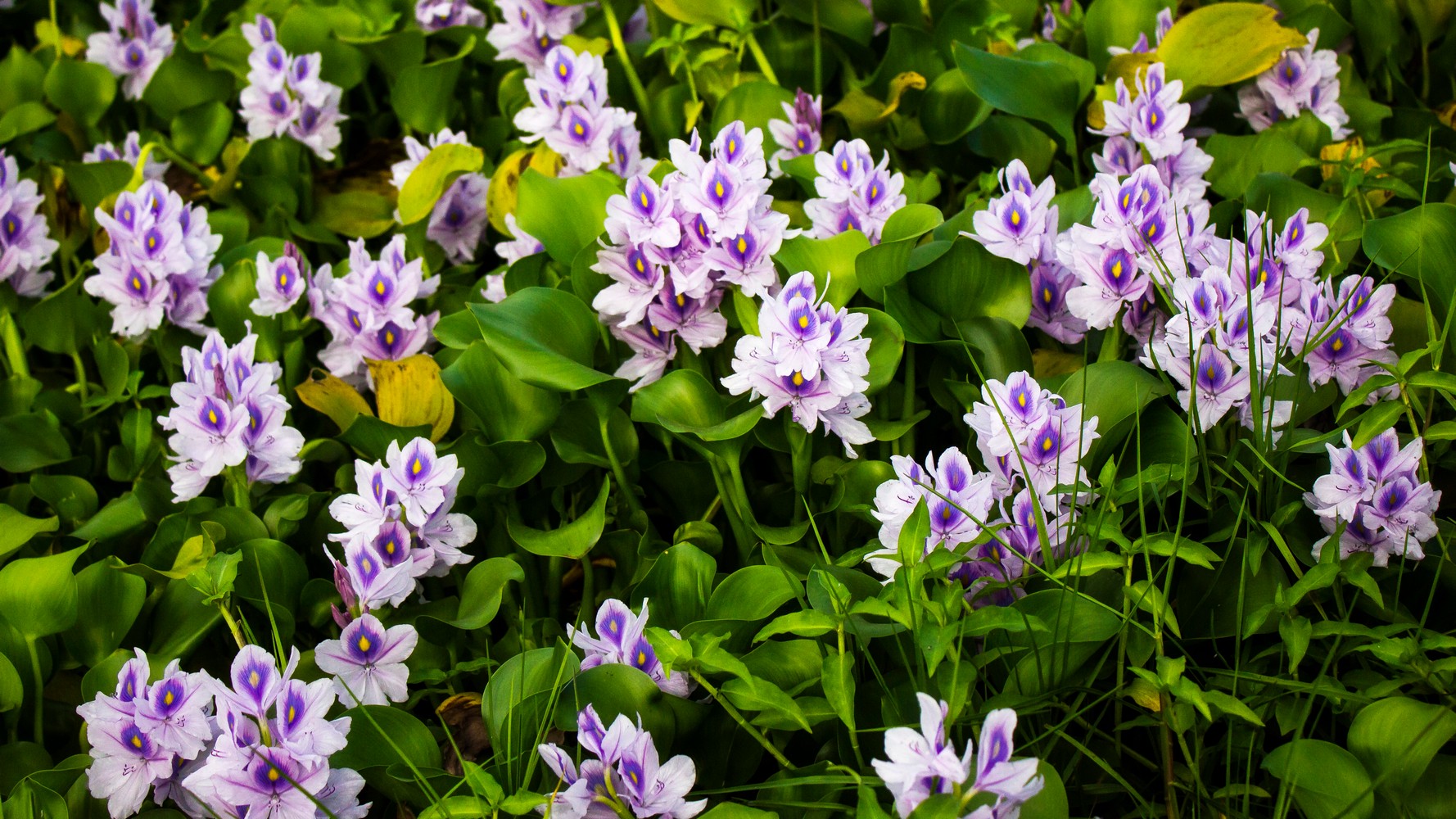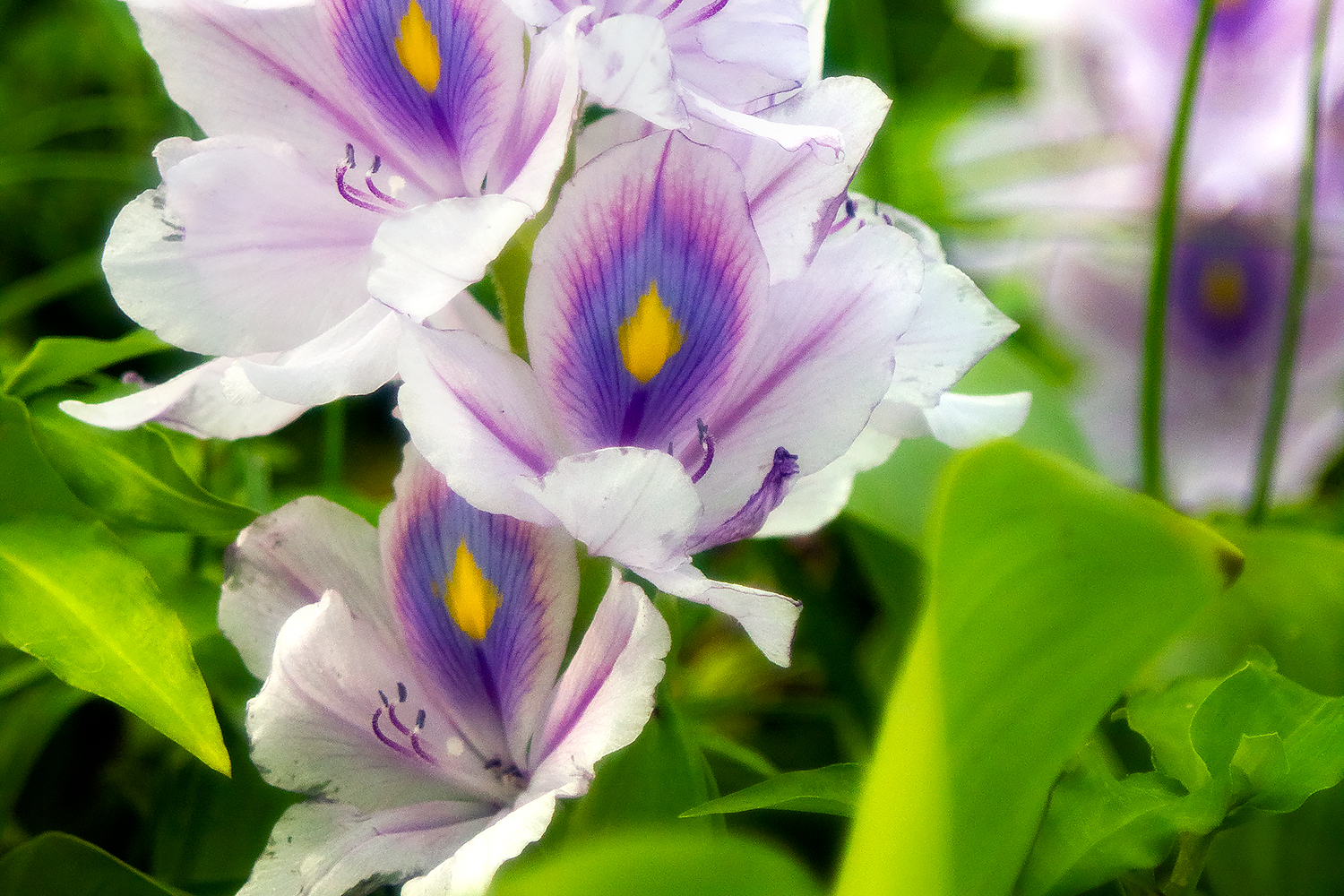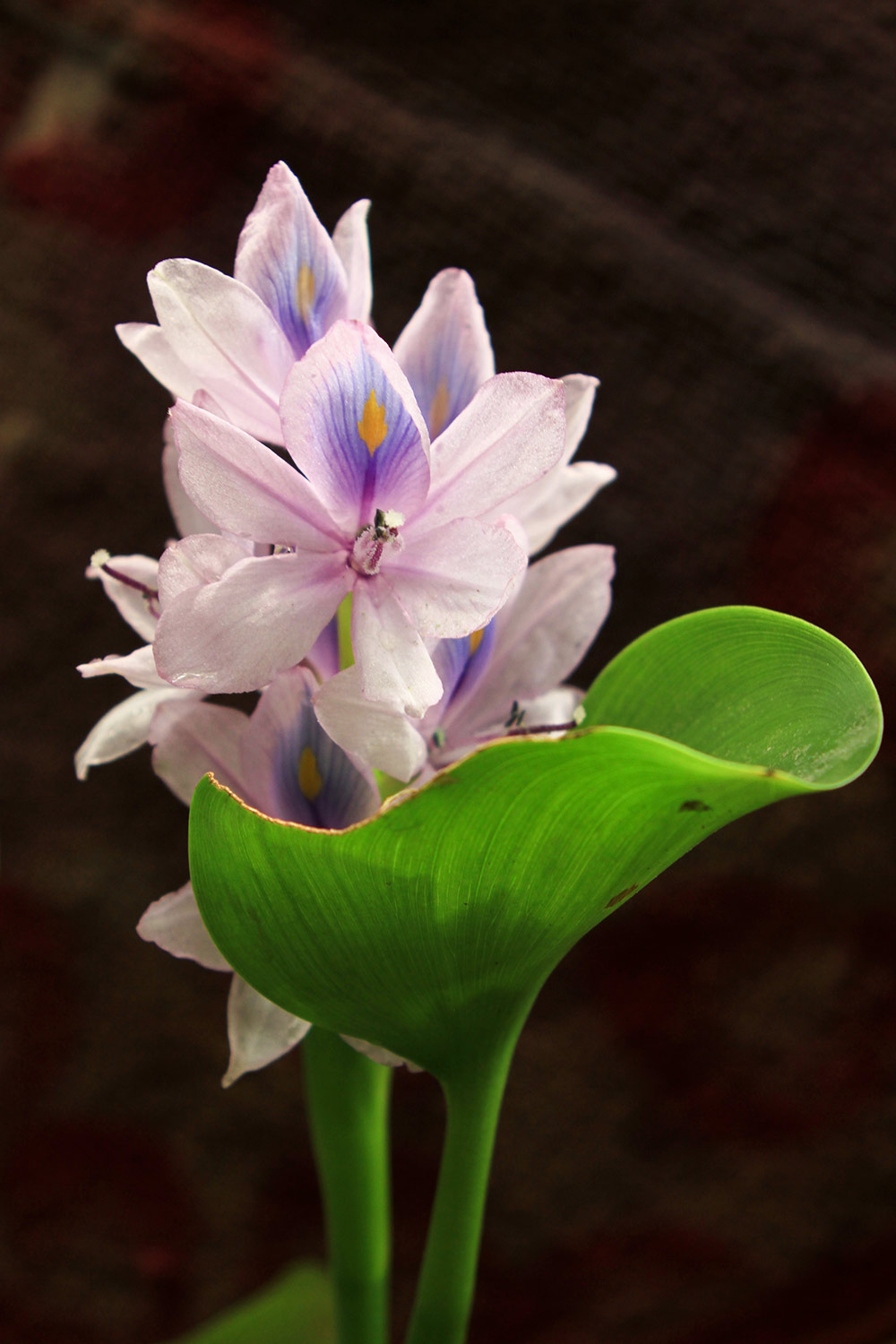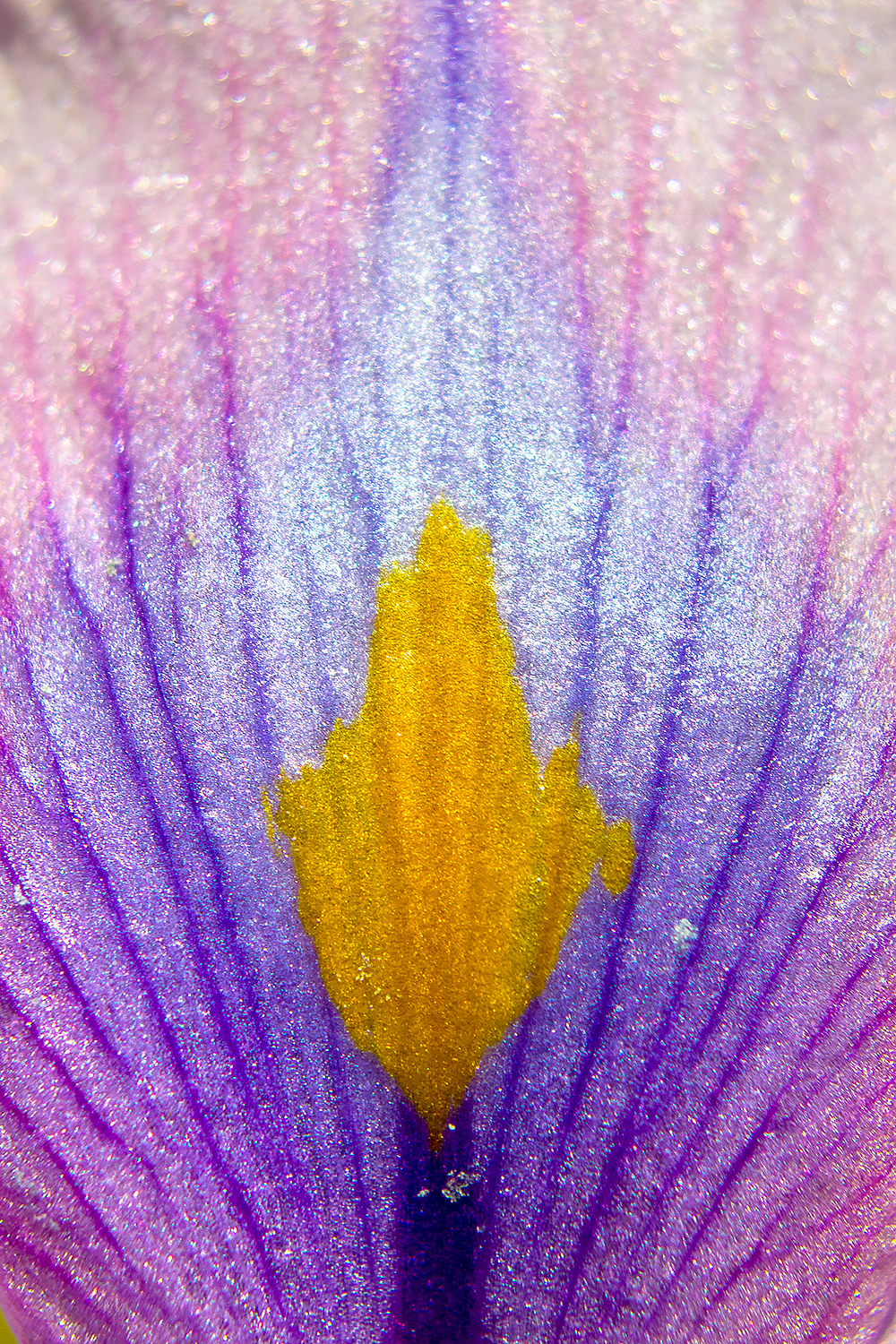
Common Water Hyacinth
Pontederia crassipes






Common Water Hyacinth
Pontederia crassipes
Once known as Eichhornia crassipes, the Water Hyacinth is a free-floating aquatic plant native to tropical South America but now found in freshwater systems around the world. It has become naturalized and often invasive throughout the tropics, including parts of the Caribbean. Though admired for its attractive blooms, it is one of the fastest-spreading aquatic plants known.
The plant forms a rosette of broad, thick, and glossy oval leaves that float on the surface of the water. Each leaf sits on a long, spongy, bulb-like stalk that provides buoyancy. Leaves typically measure 1020 cm (48 in) across. Beneath the surface hang dense, feathery roots that are dark brown to purple-black in colour.
From the centre of the rosette rises an upright flower stalk bearing a spike of 815 delicate, six-petalled blossoms, ranging from lavender to pink, each with a distinct yellow patch on the upper petal. When in bloom, a single plant can be quite striking against the green of ponds and wetlands.
Water Hyacinth reproduces rapidly, spreading by both seed and stolons (runners) that produce new daughter plants. A single plant can yield thousands of seeds in a season, allowing it to form thick mats that can quickly cover ponds, canals, and reservoirs. These mats block sunlight, reduce oxygen levels, and crowd out native aquatic vegetation especially in nutrient-rich waters affected by runoff or pollution.
While the species can absorb heavy metals and excess nutrients from water, its benefits are short-lived. When the plants die and sink, they decompose rapidly, releasing pollutants back into the water and contributing to oxygen depletion. For this reason, Water Hyacinth is considered both ecologically disruptive and difficult to manage once established.
Order: Commelinales
Family: Pontederiaceae
Genus: Pontederia
Binomial name: Pontederia crassipes
Water Hyacinth is found in freshwater systems around the island of Barbados. Can be found at Graeme Hall Swamp as well as a small section of Spring Garden Highway.
Pontederia crassipes
Once known as Eichhornia crassipes, the Water Hyacinth is a free-floating aquatic plant native to tropical South America but now found in freshwater systems around the world. It has become naturalized and often invasive throughout the tropics, including parts of the Caribbean. Though admired for its attractive blooms, it is one of the fastest-spreading aquatic plants known.
The plant forms a rosette of broad, thick, and glossy oval leaves that float on the surface of the water. Each leaf sits on a long, spongy, bulb-like stalk that provides buoyancy. Leaves typically measure 1020 cm (48 in) across. Beneath the surface hang dense, feathery roots that are dark brown to purple-black in colour.
From the centre of the rosette rises an upright flower stalk bearing a spike of 815 delicate, six-petalled blossoms, ranging from lavender to pink, each with a distinct yellow patch on the upper petal. When in bloom, a single plant can be quite striking against the green of ponds and wetlands.
Water Hyacinth reproduces rapidly, spreading by both seed and stolons (runners) that produce new daughter plants. A single plant can yield thousands of seeds in a season, allowing it to form thick mats that can quickly cover ponds, canals, and reservoirs. These mats block sunlight, reduce oxygen levels, and crowd out native aquatic vegetation especially in nutrient-rich waters affected by runoff or pollution.
While the species can absorb heavy metals and excess nutrients from water, its benefits are short-lived. When the plants die and sink, they decompose rapidly, releasing pollutants back into the water and contributing to oxygen depletion. For this reason, Water Hyacinth is considered both ecologically disruptive and difficult to manage once established.
Order: Commelinales
Family: Pontederiaceae
Genus: Pontederia
Binomial name: Pontederia crassipes
Water Hyacinth is found in freshwater systems around the island of Barbados. Can be found at Graeme Hall Swamp as well as a small section of Spring Garden Highway.
More from this Order
All photographs copyright © 2025 Barbados Field Guide. All rights reserved. Unauthorized use prohibited.



Sorry, your account does not have access to post comments.